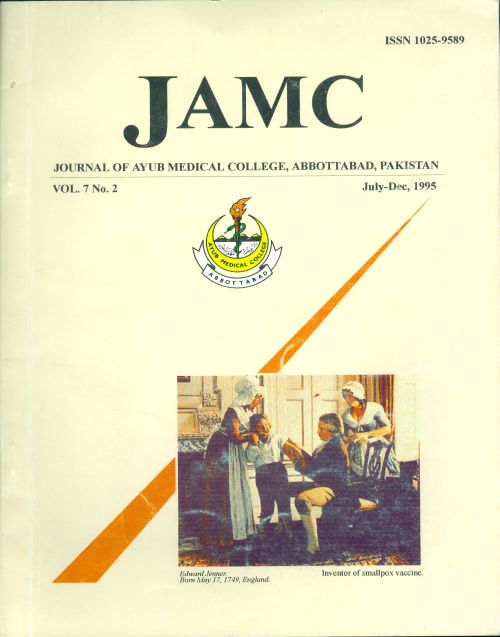REFRACTIVE ERROR AND SQUINT IN PRIMARY SCHOOL CHILDREN
Abstract
1306 school children were screened for refractive errors and squintbetween September 1991 and September 1994. 2.60% of the children
had abnormal cover test. 7.04% of the children were found to have
refractive error. Only 36.95% of the children were aware of their
refractive error and using glasses. Myopia was the commonest
refractive error amounting to 6.127c. Many of the children examined
were not aware of their ocular disease.
References
Eames TH. The influence of
hypermetropia and myopia on reading.
AM J Ophthalmas, 1955; 39: 375-7.
Von Noorden GK. Update on amblyopia.
Am J Ophthalmas 1976; 82: 147.
Newell FW. Ophthalmology: Principles
and Concepts. Saint Louis, Mosby, 1978.
Von Noorden GK & Maumenee AE.
Clinical observation on stimulus
deprivation or amblyopia. Am J
Ophthalmas 1968; 65: 220-34.
Von Noorden GK. Atlas of strabismus. St
Louis, Mosby, 1983.
Graham PA. Epidemiology of strabismus.
Br J of Ophthalmology, 1974; 58: 224-31.
Kendall JA & Stayte MA. Ocular defects
in children from birth to 6 years of age. Br
Orthoptic Journal 1989; 46: 2-6.
Maureen S, Reeves B & Wortham C.
Ocular and visual defects in pre-school
children. Br J Ophthalmas, 1993; 77: 228-
Abrahamson M & Fabian G. Change in
Astigmatism. Br J Ophthalmology, 1988;
: 145- 49.
Ingran RM. Refraction for screening of
children for squint and amblyopia. Br J
Ophthalmology 1977; 61: 8-15.
Dong WY, Thomson JR & Goulstein DB.
Br J Ophthalmology, 1990; 74: 650-53.
Kohler L. Early detection and screening.
Volf, Churchill Livingston 1984.
Downloads
How to Cite
Issue
Section
License
Journal of Ayub Medical College, Abbottabad is an OPEN ACCESS JOURNAL which means that all content is FREELY available without charge to all users whether registered with the journal or not. The work published by J Ayub Med Coll Abbottabad is licensed and distributed under the creative commons License CC BY ND Attribution-NoDerivs. Material printed in this journal is OPEN to access, and are FREE for use in academic and research work with proper citation. J Ayub Med Coll Abbottabad accepts only original material for publication with the understanding that except for abstracts, no part of the data has been published or will be submitted for publication elsewhere before appearing in J Ayub Med Coll Abbottabad. The Editorial Board of J Ayub Med Coll Abbottabad makes every effort to ensure the accuracy and authenticity of material printed in J Ayub Med Coll Abbottabad. However, conclusions and statements expressed are views of the authors and do not reflect the opinion/policy of J Ayub Med Coll Abbottabad or the Editorial Board.
USERS are allowed to read, download, copy, distribute, print, search, or link to the full texts of the articles, or use them for any other lawful purpose, without asking prior permission from the publisher or the author. This is in accordance with the BOAI definition of open access.
AUTHORS retain the rights of free downloading/unlimited e-print of full text and sharing/disseminating the article without any restriction, by any means including twitter, scholarly collaboration networks such as ResearchGate, Academia.eu, and social media sites such as Twitter, LinkedIn, Google Scholar and any other professional or academic networking site.










